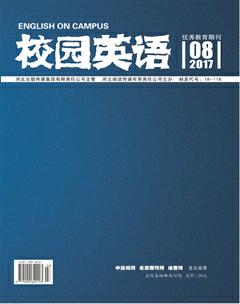Differences between Western and Chinese Teaching Methods
Wei+Guo
As is known to us, there are a large number of differences between western and Chinese teaching methods. To be specific, all these differences are resulted from different cultural values. According to Hofstedes research, there are four pairs of contrasting values, which are large and small power distances, individualism versus collectivism, masculinity versus femininity as well as strong and weak uncertainty avoidance. Now Id like to share some of my experiences which reflect the first two contrasting values.
To begin with, different power distances can lead to different teaching methods. In most of the classes given by Chinese teachers both in my undergraduate and post-graduate education, I have been receiving the teacher-centered education. The new material is presented by teachers explanation plus the PPT presentation. Thus, I have to highly focus on his or her explanation. If I think more about one question, I would get lost when I draw my attention back in class. Besides, Chinese teachers get feedback by the approach of asking questions and students giving answers. We students seldom contradict our teacher in class to show our respect to teacher. It is the teacher who makes decisions and outlines the paths for us to follow in class. We are highly dependent on our teacher. Therefore, the effectiveness of learning is largely related to excellence of teacher. Therefore, it is a common phenomenon that many parents seek to arrange their kids in the class instructed by excellent teacher.
When I was freshmen in college, I met my first foreign teacher, a graceful and knowledgeable lady. She is from America and used the typical America way to teach us. Every class, there was more than one fascinating group work activities such as group discussions, role plays and so on. We are expected to make dialogues or role plays in class. Whats more, she would ask us to solve problems by group work, and there were more interactions between her and us. Usually she would offer us choices and asked us to choose the in-class activities which we preferred. It is just through these various activities that we developed our ability and gained the effectiveness of learning.
After learning this intercultural communication course, I come to know that different power distances can lead to different teaching methods. Our America teacher came from a small power distance country, in which students are expected to initiate and make decisions. Besides, teacher is equal to students. She was trying to communicate with us equally. So her class is student centered. On the other hand, China, actually, is a typical large power distance country, in which teachers hold power and instruct students by giving specific instructions. Students are required obedience to their teacher. There are fewer interactions between teachers and students in class.
Secondly, the contrasting value individualism versus collectivism can also contribute to different teaching methods. In some of my Chinese classes, teachers tend to ask us to form a group idea representing the whole group. Then, a group member is chosen as the representative of the in-group to speak out our group idea. Besides, being orderly and harmonious is maintained. It is polite that we only stand up in class only when called upon by the teacher. On the other hand, in my foreign teachers classes (including my freshmen year teacher as well as my ICC teacher), we are encouraged to leave our seats to find partners to exchange our ideas in group activities. Usually the partners are not fixed. Whats more, we are encouraged not to be afraid of losing face, and debate with classmates.
It is known that Chinese is a collectivist culture, in which it is important to maintain harmony and avoid confrontations especially with teachers in class. In addition, in this “we” culture, group ideas are always stated rather than individual learning experience and individual idea. It is expected that students who are involved in a group should have duties and contributions to the group. On the contrary, in individualist cultures, individual experience and thought are highly appreciated. My American teacher attached great importance to fostering the ability of thinking by ourselves. We are allowed to cooperate with group members and out-group members. We could learn through exploration by ourselves or by peer mutual help. Whats more, it is valued that conflict can be brought into the open, and confrontation in learning situations can bring about improvement.
From what has been discussed above, it is obvious that there do exist a large number of differences between western and Chinese teaching methods. For us students, it is important that we grasp different deep cultural values which can help us well aware of the differences and better understand different teaching approaches. In addition, it is crucial for us to appreciate the similarities and accept the differences to acquire intercultural competence.

